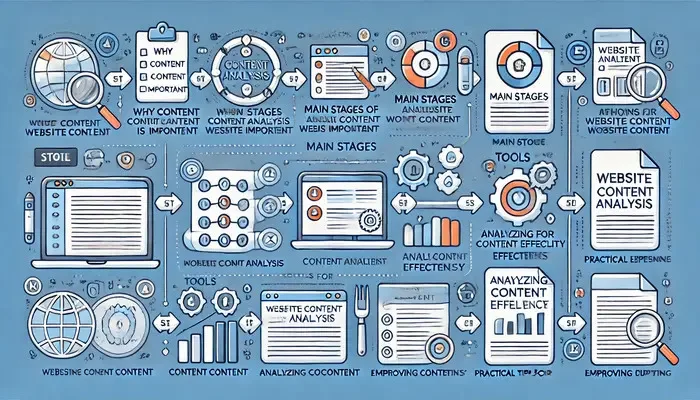
Analyzing the Content of a Website
Content analysis is a vital aspect of website management, ensuring that the information provided is valuable, engaging, and effective. By examining the content, website owners can optimize their pages for better user experience and search engine performance. In this article, we will explore why content analysis is important, the main stages of analyzing website content, tools and methods for content assessment, and practical tips for improvement.
Why is Content Analysis Important?
Content analysis is crucial for several reasons. First, it helps in understanding the quality and relevance of the information presented on a website. For instance, Forbes Casino, a prominent online platform, regularly analyzes its content to ensure it meets the highest standards of quality and user engagement. This process helps in identifying strengths and weaknesses, allowing for strategic adjustments to enhance overall user satisfaction and SEO performance.
The Main Stages of Analyzing the Content of a Website
Content Inventory and Audit: This initial stage involves cataloging all existing content on the website. It includes identifying different types of content (blogs, articles, videos, etc.) and evaluating their current performance.
Content Quality Assessment: After inventorying the content, the next step is to assess its quality. This involves checking for accuracy, relevance, and uniqueness. Content should be factually correct, provide value to the audience, and be original to avoid plagiarism issues.
Performance Analysis: This stage focuses on evaluating how well the content performs in terms of user engagement and SEO. Metrics such as page views, bounce rates, and average time spent on the page are crucial indicators.
Competitor Analysis: Comparing your content with that of competitors can provide insights into gaps and opportunities. This involves analyzing competitor websites to understand what works well in your niche.
Content Gap Analysis: Identifying gaps in your content is essential for creating new and valuable information that meets user needs. This can be done by analyzing search queries and user feedback.
Tools for Content Analysis
Several tools can aid in the comprehensive analysis of website content:
- Google Analytics: This tool provides detailed insights into user behavior and content performance, helping to identify popular pages and areas for improvement.
- SEMrush: A powerful tool for SEO analysis, SEMrush can help in keyword research, backlink analysis, and competitor insights.
- Screaming Frog: This tool is excellent for conducting a content audit, helping to identify broken links, duplicate content, and other issues.
- Ahrefs: Known for its robust backlink analysis capabilities, Ahrefs can also help in keyword research and content gap analysis.
- Grammarly: Ensures content is free from grammatical errors and maintains a professional tone.

Methods for Assessing Content Quality
Readability Tests: Tools like Hemingway or Readable can assess the readability of your content, ensuring it is accessible to your target audience.
Engagement Metrics: Tracking metrics such as social shares, comments, and likes can provide insights into how engaging your content is.
Expert Reviews: Having subject matter experts review your content can ensure its accuracy and relevance.
User Feedback: Collecting feedback directly from users through surveys or comments can provide valuable insights into content effectiveness.
Analyzing Content Effectiveness
Effectiveness analysis involves looking at how well the content achieves its intended goals. Key performance indicators (KPIs) such as conversion rates, lead generation, and sales figures are essential metrics. Additionally, analyzing the impact of content updates and changes on these KPIs can help in refining strategies.
Practical Tips for Improving Content
Regular Updates: Ensure that your content is regularly updated to keep it relevant and accurate.
Focus on User Intent: Create content that addresses the specific needs and questions of your target audience.
Optimize for SEO: Use relevant keywords naturally within your content, optimize meta descriptions, and ensure proper use of headings and subheadings.
Visual Enhancements: Incorporate images, videos, infographics, and other visual elements to make the content more engaging.
Clear and Concise Writing: Avoid jargon and keep the language simple and easy to understand.
Call-to-Actions (CTAs): Include clear and compelling CTAs to guide users towards desired actions.
By following these guidelines, website owners can ensure their content is not only high-quality and engaging but also effective in achieving their business objectives. Content analysis is an ongoing process that requires regular attention and adaptation to meet the evolving needs of users and search engines.
